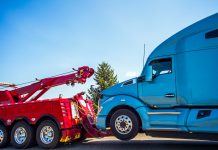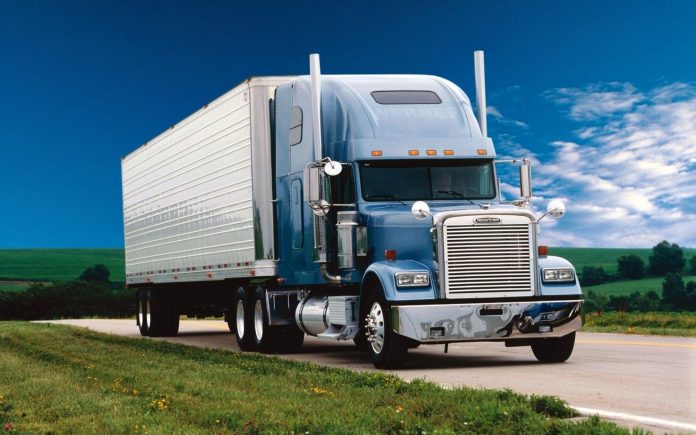Most folks in Ontario trucking are aware of the serious sanctions if a commercial vehicle loses a wheel. Many professional drivers are unaware of basic wheel separation preventive measures, there still is a lot of fear in the industry which in my opinion stems from a lack of knowledge, I have encountered some drivers that believe that it is a technician’s job to perform pre-trip inspections. Fortunately, /Unfortunately, depending on what side of the coin you are on, the owner of the vehicle in many cases is held to be vicariously liable for damages/injuries caused by their operation. Management tends to rely, in most cases, rightfully so on their vendor, technician, and driver’s collective expertise. Statistics show that most wheel separations are the result of a fastener failure, something that does not happen overnight. Driver inspections can prevent most if not all wheel separation events. It is unbelievable that this day in age and the information accessible that this is still an issue, especially in the light-duty realm.
I have facilitated many vehicle inspection training courses over the past few years, one of my first questions usually is ‘what is your definition of a commercial motor vehicle?’ I usually get a plethora of answers, usually none are correct. In the view of keeping things simple, if it has a cargo area, generally, it is classified as a commercial vehicle, and yes this includes a pickup truck, of course there are exceptions, consult your local Highway Traffic Act; the reading of which beats counting sheep any day! Where things get simplified is when your actual gross vehicle weight (‘GVW’) or registered gross weight (‘RGW’) is greater than 4,500Kg, slap a yellow annual inspection sticker on it and suddenly all regulations apply.
Now, to quickly Segway into how wheel separations commonly occur. The wheels are attached to the axle utilizing studs and bolts (‘fasteners’), each has a specific torque value, this value must be followed. Generally, the number varies but for most CMV’s there are between 5-10 fasteners per wheel assembly. Statistics show that fastener failure was the cause of most recent wheel separation incidents. The wheels must be correctly installed, not too tight or too loose, mounting pads are clean, and components lubricated per manufacturer directions. A stud pilot wheel assembly will not require oil, whereas a hub pilot assembly often requires a small amount of lubrication on the nut and washer as well as the stud to get a correct torque value. Often, the root cause of wheel separations was improper installation due to over-torquing of fasteners causing the stud to stretch and loosen and/or break off. Manufacturers also recommend, it is the practice of some organizations to require the re-torque of re-installed wheels within 100 miles (160 Km). So, managers audit your wheel installation & vehicle inspection procedures to ensure that they are followed.
The other more common reason for wheel separation is bearing failure, in some cases, this can be the result of improper bearing tightening during replacement/service, in others loss of lubricant from a failed wheel seal. In many cases bearings fail due to lack of lubrication, in most cases, there was leaking gear oil to indicate a problem. This again is a condition which in most cases the driver would be aware of if they complete a thorough vehicle inspection.
O.reg 199/07 Vehicle Inspections is the go-to for driver and company legal obligations concerning vehicle inspections. Simply put, if you have an A or D class license you will have had to have demonstrated the ability to correctly inspect a CMV at one point in time or another. Once again, there are no reasonable explanations for losing a set of wheels generally, the defect is both palpable and accessible. In my experience vehicle inspections are the most often overlooked safety procedures in the industry. The results of enforcement inspection blitzes should serve as a ruler to measure how well as an industry we are doing; typically, 1 out of 5 vehicles are declared out of service for one reason or another.
Periodic maintenance and inspection by qualified and licensed technicians is imperative to any well functioning inspection program. The legal minimum for safety inspections is once per year. Most companies go above and beyond this requirement. Depending on the application some vocational/low mile organizations may choose to inspect based on vehicle hours whereas other regional/long-distance carriers may base their schedules on distance traveled. Regular lubrication and maintenance can go a long way and reinforces the efforts of your drivers.
Training and education go a long way to augment your vehicle inspection program. Over the years vehicle technology has changed, inspection legal requirements have changed, and many drivers have not received the updated information. The training received from some carriers is minimal surrounding vehicle inspection. A lot of drivers know what schedule 1 is and how to use it, where the gap exists tends to be what the exact specifications are for go-no-go. As a part of their training, drivers should be able to correctly use aftermarket wheel safety devices which show if a fastener has loosened, drivers should be able to demonstrate how to determine bearing lubricant levels, whether loose fasteners exist, and what the organization’s policy for re-torquing wheel fasteners is.
No driver or company needs the negative publicity of a wheel separation incident hanging over their heads. The fines, consequences, and potential for injury do not justify overlooking this important element in your organization’s safety management system.



















